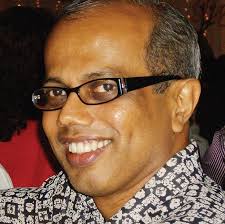Two major breakthroughs for greater inclusivity
Two significant things happened over the last week. One of them was the election of Sadiq Khan, son of a bus conductor and a seamstress, as mayor of London.
May 20, 2016

By Anil Netto
Two significant things happened over the last week. One of them was the election of Sadiq Khan, son of a bus conductor and a seamstress, as mayor of London.
The fact that he is the first Muslim mayor of London made headlines. Some viewed it in alarmist tones: here was further evidence that Islam was gradually taking over Europe.
But others, including me, actually see it as positive development in more ways than one.
For one thing, it breaks the unfortunate stereotype of Muslims as potential terrorists prone to violence. In fact, the rival side at the mayoral polls tried their level best to link him to Muslim extremists.
Dispelling that perception, Sadiq’s swearing-in ceremony was held at Southwark Cathedral, where he memorably declared, “My name is Sadiq and I’m the mayor of London.”
But there is more to Sadiq than his Muslim identity, which he says is only one facet of his overall identity.
Sadiq wants to turn London into one of the greenest cities (which also means improved, more affordable public transport) and he wants to include every community in his vision.
This is what is heartening: Sadiq’s election as Mayor offers not just people of other faiths a view of what a moderate, even progressive Muslim leader might look like — and, in the process, smashes some of the prevailing stereotypes and anxieties about the growing Muslim population in Europe.
A former human rights lawyer who fought against abuse of police powers, Sadiq is presented with a golden opportunity to offer many Muslim-majority nations — and their people — an alternative more open approach to leadership compared to authoritarian, dictatorial leaders promoting ethno-centric national policies in their respective countries.
Here is a chance to showcase how inclusivity allied with participatory democracy and a strong civil society can really work.
Much is riding on Sadiq and whether he can deliver on the trust that many Londoners have placed on him.
The other major step towards greater inclusivity took place in our own Church, in the run-up to Pentecost, when the Bishop of Rome suggested he was willing to set up a special commission to study whether it was in keeping with Church teaching for women to serve as deacons.
That unleashed a storm of discussion. For many, this is a welcome development, perhaps long overdue — and perhaps not surprising given the trajectory that the Second Vatican Council set in motion and the window it opened for the Spirit to blow in and brush away the cobwebs that had taken root.
The fact that the Church is poised to discuss this issue is a breakthrough in itself given that the topic has been largely off-limits.
It is a breakthrough because this conversation about the role of women, especially in leadership positions in the Church, needs to be carried out.
In the past, there has been tension among the largely male diocesan hierarchy and the religious, especially women religious congregations. While the grounds for these differences may not have been earth-shaking, perhaps the real undercurrents and dynamics bubbling beneath the surface may have had more to do about issues of leadership, gender and power, not least in the United States church.
Even the early followers of Jesus were not spared this dynamic tension about the role of women in the early church, where many served as benefactors and even deacons.
After all, women had outnumbered men at the foot of the cross of Jesus and at the burial. And Mary Magdalene was the first witness of the Resurrection, and she was even regarded as an apostle in some circles.
Then, there was Anna, probably the first to proclaim the Gospel (Luke 2:36-38 ):
36 There was a prophetess, too, Anna the daughter of Phanuel, of the tribe of Asher. She was well on in years. Her days of girlhood over, she had been married for seven years
37 before becoming a widow. She was now eighty-four years old and never left the Temple, serving God night and day with fasting and prayer.
38 She came up just at that moment and began to praise God; and she spoke of the child to all who looked forward to the deliverance of Jerusalem. How about all those New Testament women ‘deacons’ (though their roles may be somewhat different from present day deacons).
Let’s not forget the lowly status of women in society during New Testament times and the prevailing attitudes in the Mediterranean about a women’s place.
These women must have faced real challenges — not least from the menfolk, especially the male leaders — in coming out of their homes to be actively involved in the ministry and public life. This speaks volumes about what these women felt about the equality and elimination of classes in the kingdom of God.
Thus, Francis’ suggestion to set up a commission to discuss all this is not a moment to soon and is in keeping with the Spirit unleashed at Vatican Two.
Such a commission will set a ‘train’ in motion — one which few will be able to predict the final station. The important thing for us is to have faith that the Spirit is firmly in control of the locomotive and will lead the Church to face up to the challenges of the times in new and surprising ways.







Total Comments:0